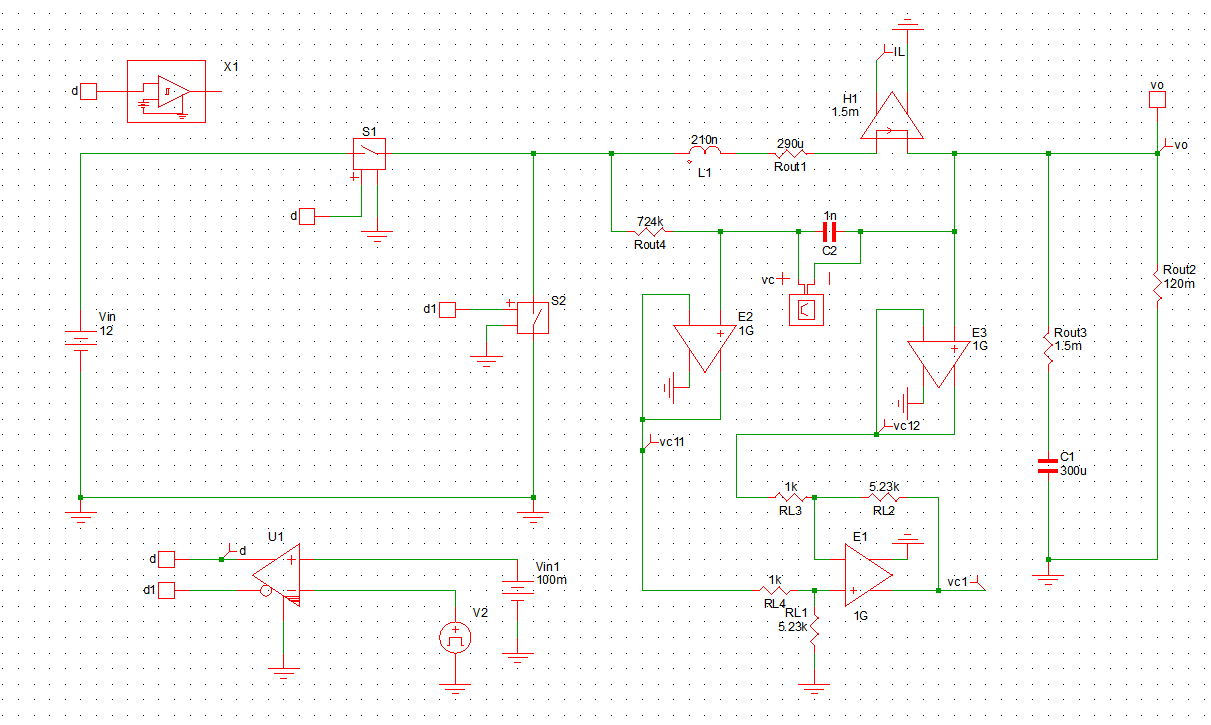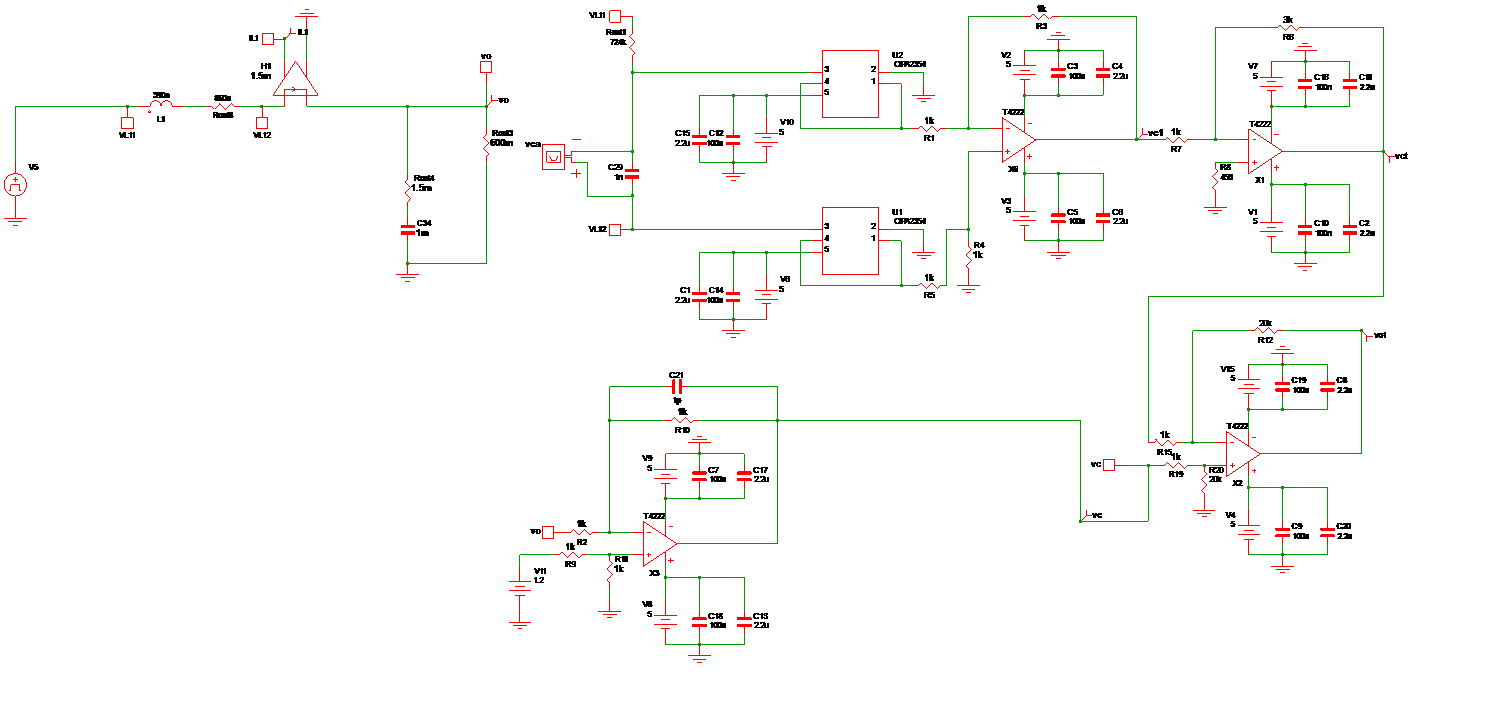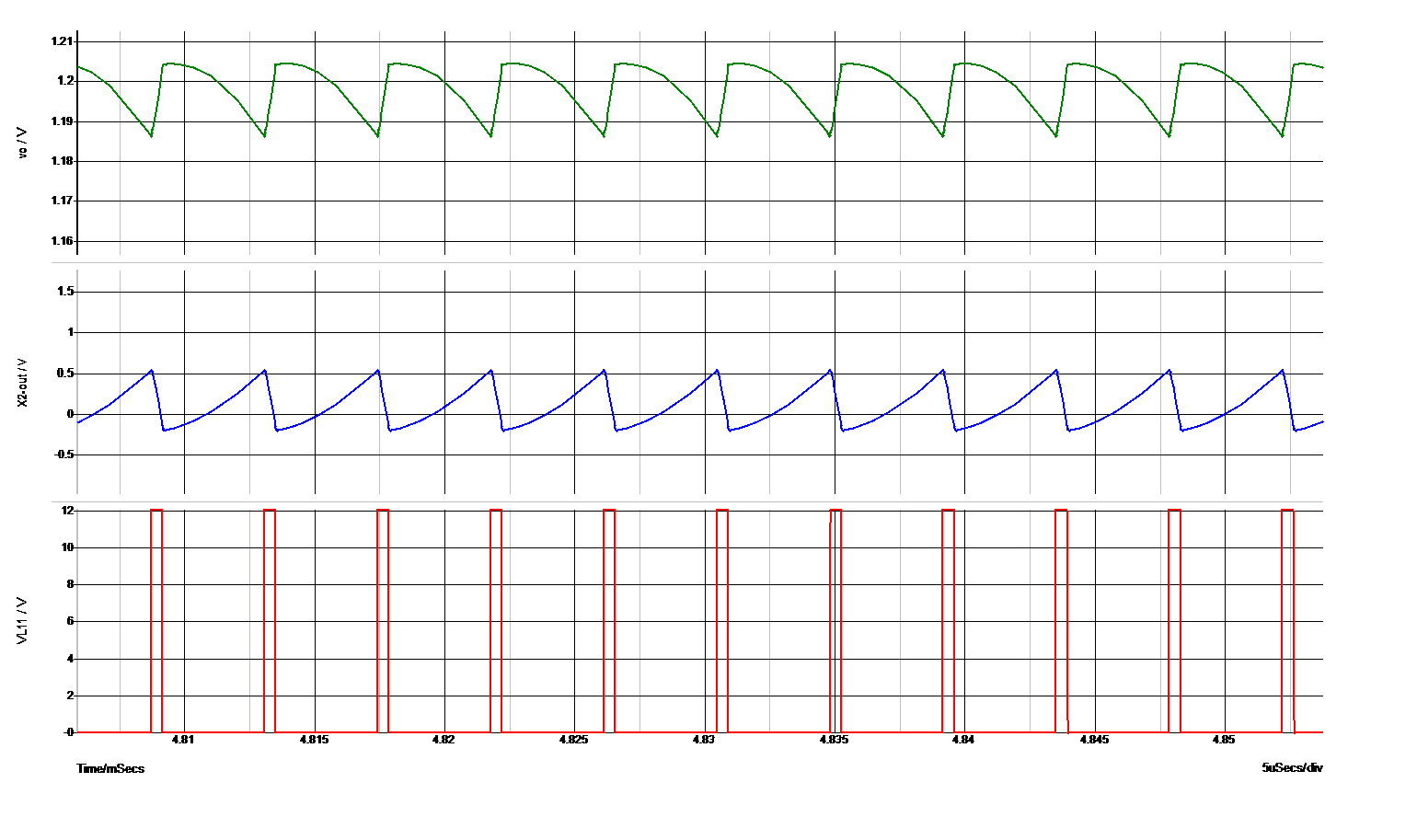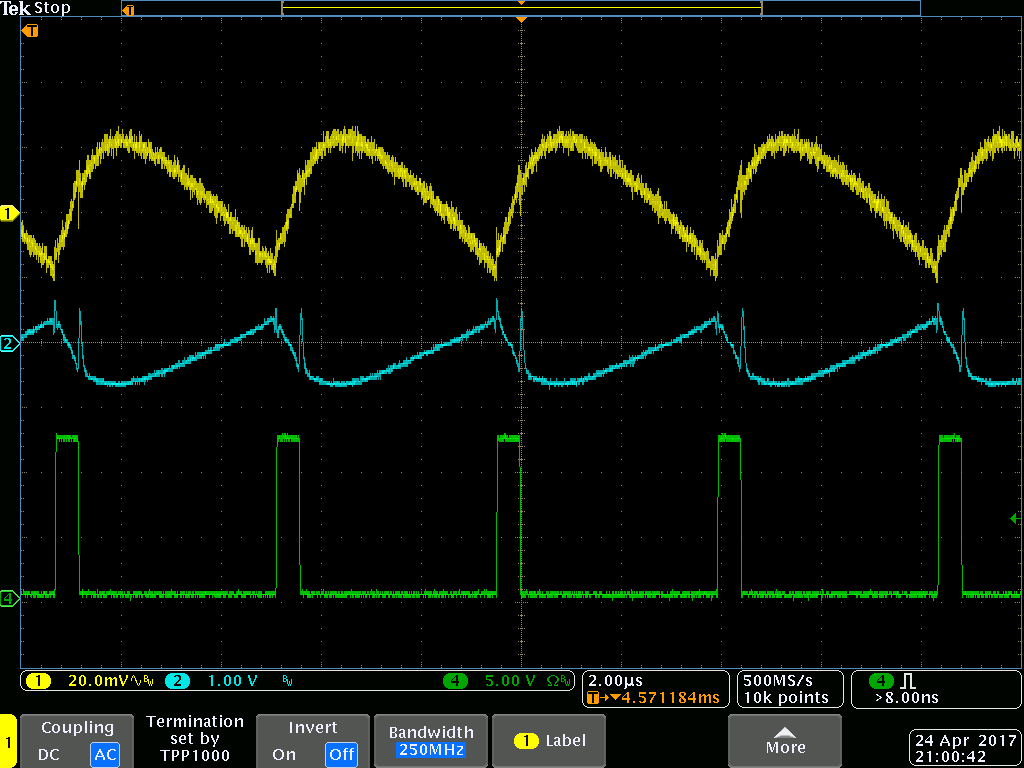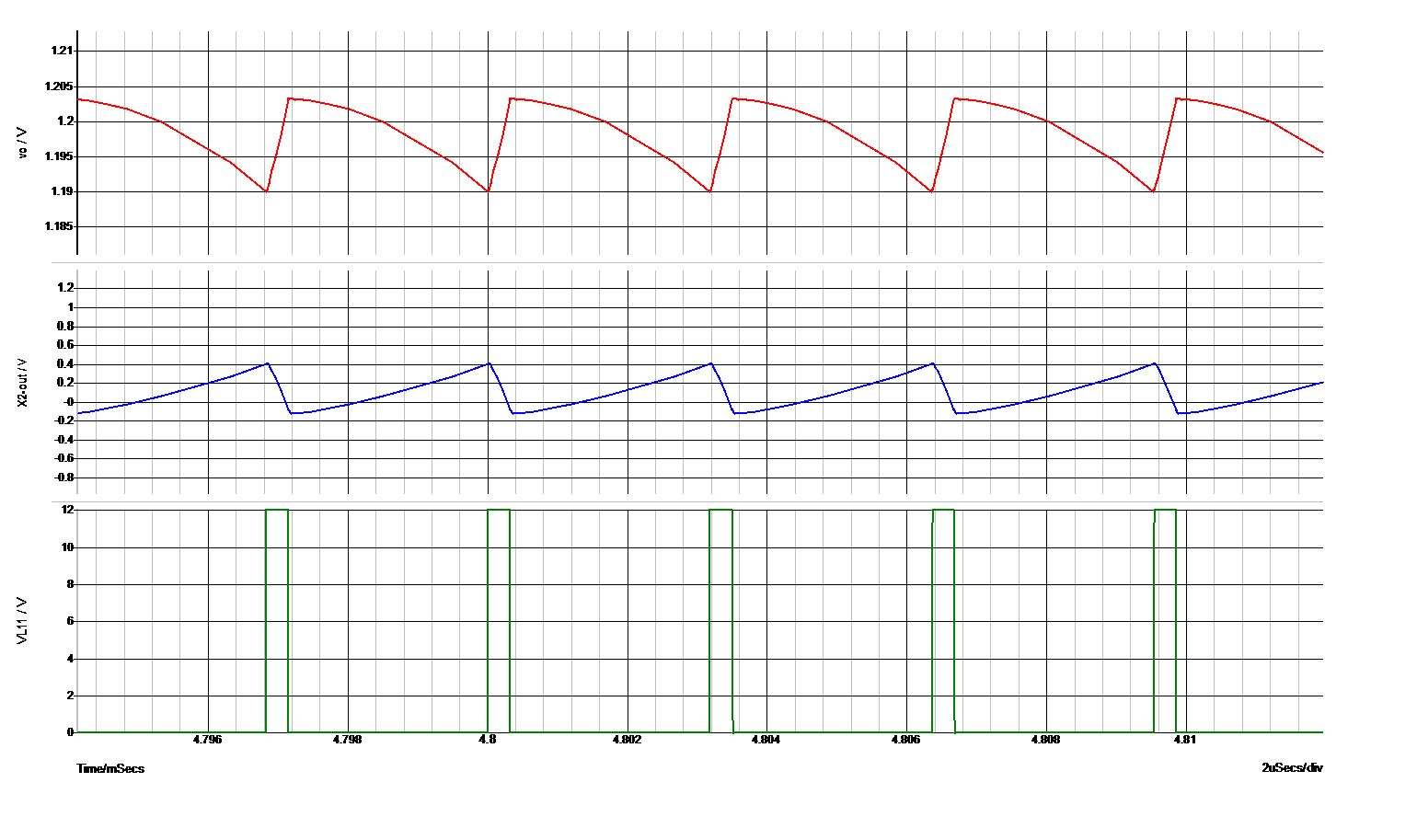Hi friends:
I need some amplifier to build up the signal modulation for the DCR sensing for the VR application. In my application, the power supply can be -5V/0V/+5V . There are two phase interleaved. The switching frequency is 1MHz. The sensing current for each phase is 5A to 30A. And the equivalent sensing resistor is 1.5m ohms.
First, I need two amplifier work as the buffer to sense the inductance voltage of each side for each phase. Then need one amplifier work as the differential amplifier and summing amplifier.
At first, I selected several op-amps for usage. Such as THS4222, LMH6626,LMH6654,OPA2822 and so on.
However, by simulating their SPice Model. Some chips seem not to work well, such like OPA2822 and LMH6626. For LMH6654, I cannot find the SPice Model.
Could you recommend some popular chips which can be used in this application?
Best wishes,
Lucy


